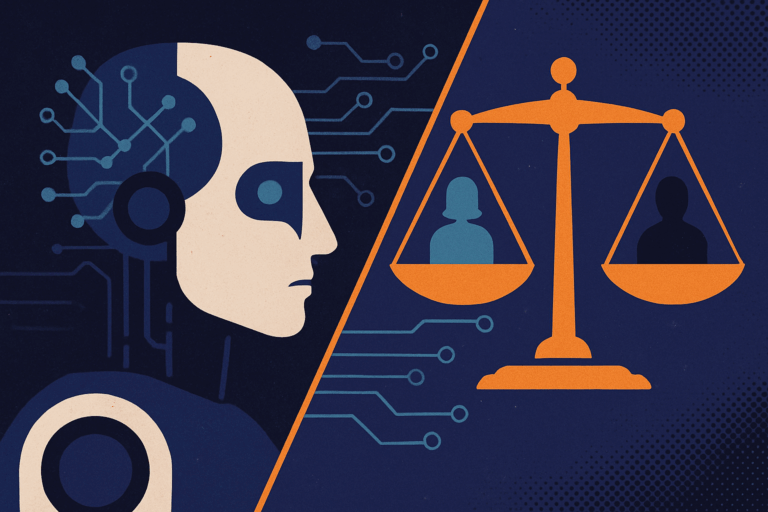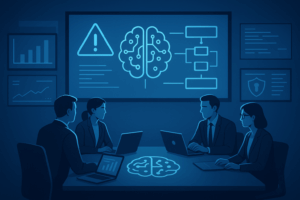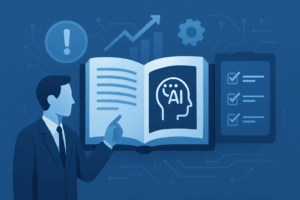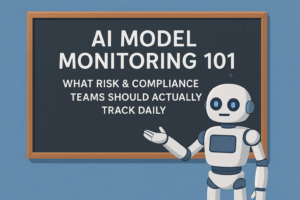Did you know a widely used healthcare algorithm underestimated risk for Black patients by 40%? That’s not just a bug—it’s AI bias in action.
Artificial Intelligence (AI) is transforming our world, from powering virtual assistants to streamlining hiring processes. But beneath the surface of these powerful tools lies a hidden risk: AI bias. When algorithms amplify inequality, they can perpetuate harm, reinforce stereotypes, and undermine trust in technology. As an information risk management professional, I’ve seen how unchecked AI can create real-world consequences. In this post, we’ll explore what AI bias is, how it happens, why it matters, and what we can do to mitigate it. Let’s dive in.
What Is AI Bias?
AI bias occurs when algorithms produce unfair or discriminatory outcomes, often reflecting the flaws in their design, data, or deployment. Unlike human bias, which is driven by personal beliefs, AI bias stems from systemic issues embedded in code, data, or processes. For example, an AI hiring tool might favor male candidates if trained on resumes from a male-dominated industry. Or a facial recognition system might misidentify people with darker skin tones due to unrepresentative training data.
These aren’t just tech glitches—they’re real-world problems:
- 📉 Denied jobs
- 🏥 Misdiagnosed illnesses
- 👮 Wrongful arrests
The stakes are high, and understanding the roots of AI bias is the first step to addressing it.
How Does AI Bias Happen?
AI systems learn from data, and if that data is flawed, the results will be too. Here are the primary ways bias creeps into AI:
Biased Training Data
AI models are only as good as the data they’re trained on. If historical data reflects societal inequalities—like hiring patterns favoring one gender or race—the AI will replicate those patterns. For instance, in 2018, Amazon’s recruiting tool downgraded resumes with female-associated terms (e.g., “women’s chess club”) because it was trained on male-dominated tech resumes. The result? A biased algorithm that penalized women.
Lack of Diversity in Development
Who builds AI matters. If development teams lack diversity, they may overlook how algorithms impact underrepresented groups. A 2023 study by the AI Now Institute found that only 12% of AI researchers at major tech companies were women, and even fewer were from minority groups. This homogeneity can blind developers to potential biases.
Algorithm Design Choices
Even well-intentioned algorithms can amplify bias. For example, prioritizing “efficiency” in a loan approval AI might lead it to favor applicants from wealthier zip codes, indirectly discriminating against lower-income communities. Design choices reflect priorities, and those priorities can unintentionally exclude.
Unintended Feedback Loops
AI systems often learn from user interactions, creating feedback loops. If an algorithm recommends certain content (e.g., job ads) to one group over another, it reinforces existing disparities. Over time, these loops can entrench inequality, making it harder to break the cycle.
Why AI Bias Matters
AI bias isn’t just a technical issue—it’s a societal one. Here’s why it’s a big deal:
- Real-World Harm: Biased AI can lead to unfair hiring, unequal access to credit, or misdiagnoses in healthcare. For example, a 2019 study in Science found that a widely used healthcare AI underestimated risk for Black patients, affecting their access to care.
- Erosion of Trust: When AI produces unfair outcomes, people lose faith in technology. A 2024 Pew Research survey showed 52% of Americans worry AI will worsen inequality.
- Legal and Compliance Risks: Biased AI can violate laws like the U.S. Equal Employment Opportunity Act or the EU’s General Data Protection Regulation (GDPR). Companies face lawsuits, fines, and reputational damage.
- Amplifying Inequality: AI can scale bias at unprecedented speed. A single biased algorithm can impact millions, perpetuating systemic inequities faster than human decisions ever could.
The Shadow AI Connection
Last week, we discussed Shadow AI vs. Sanctioned AI, highlighting how unauthorized AI tools can bypass oversight. Shadow AI—think employees using unvetted tools like ChatGPT—can amplify bias risks. Without proper governance, these tools may rely on biased public datasets or lack transparency, making it impossible to spot and fix inequalities. Sanctioned AI, with its oversight and audits, offers a better chance to catch bias early, but even approved systems aren’t immune if data or design flaws persist.
How to Mitigate AI Bias
Tackling AI bias requires proactive steps from developers, organizations, and policymakers. Here are practical ways to reduce its impact:
- Diversify Training Data Use representative datasets that reflect the diversity of the population. For example, facial recognition systems should be trained on images across skin tones, ages, and genders. Regular data audits can help identify gaps.
- Increase Diversity in AI Development Hire diverse teams to design and test AI systems. Different perspectives can spot biases that homogeneous teams might miss. Companies like Google and Microsoft have started diversity initiatives, but more progress is needed.
- Implement Bias Audits Regularly test AI systems for biased outcomes. Tools like IBM’s AI Fairness 360 can analyze models for disparities. Transparency reports, like those mandated by the EU AI Act, can hold companies accountable.
- Prioritize Explainability Use “explainable AI” models that show how decisions are made. If an algorithm rejects a loan application, users should know why. This transparency helps identify and correct biases.
- Establish AI Governance Organizations should create clear AI policies, especially to prevent Shadow AI. Sanctioned AI systems should include bias checks as part of compliance. For example, a 2025 Gartner report predicts 80% of enterprises will adopt AI governance frameworks to manage risks.
- Engage Stakeholders Involve communities affected by AI in its development. Public input can highlight real-world impacts that developers might overlook. Initiatives like the Algorithmic Justice League advocate for this approach.
The Road Ahead
AI bias is a solvable problem, but it requires vigilance. As AI becomes more embedded in our lives, the risk of amplifying inequality grows. Organizations must balance innovation with accountability, ensuring AI serves everyone, not just a select few. Policymakers, too, have a role—regulations like the EU AI Act (effective 2025) are pushing for fairness, but global coordination is needed.
For individuals, awareness is key. If you’re using AI tools at work or home, ask: Where did this data come from? Who built this system? Is it transparent? These questions can help you spot potential biases and advocate for better tech.
Call to Action
AI bias isn’t just a tech problem—it’s a human one. Let’s demand transparency, diversity, and accountability in AI development.
Have you encountered AI bias in your life—maybe in a job application, recommendation algorithm, or elsewhere? Don’t stay silent. Share your experience in the comments or DM me—let’s push this conversation forward.
For more on managing AI risks, follow my channels on Instagram, YouTube, and X, where we’ll keep exploring cybersecurity and tech ethics. Stay curious, stay safe!




